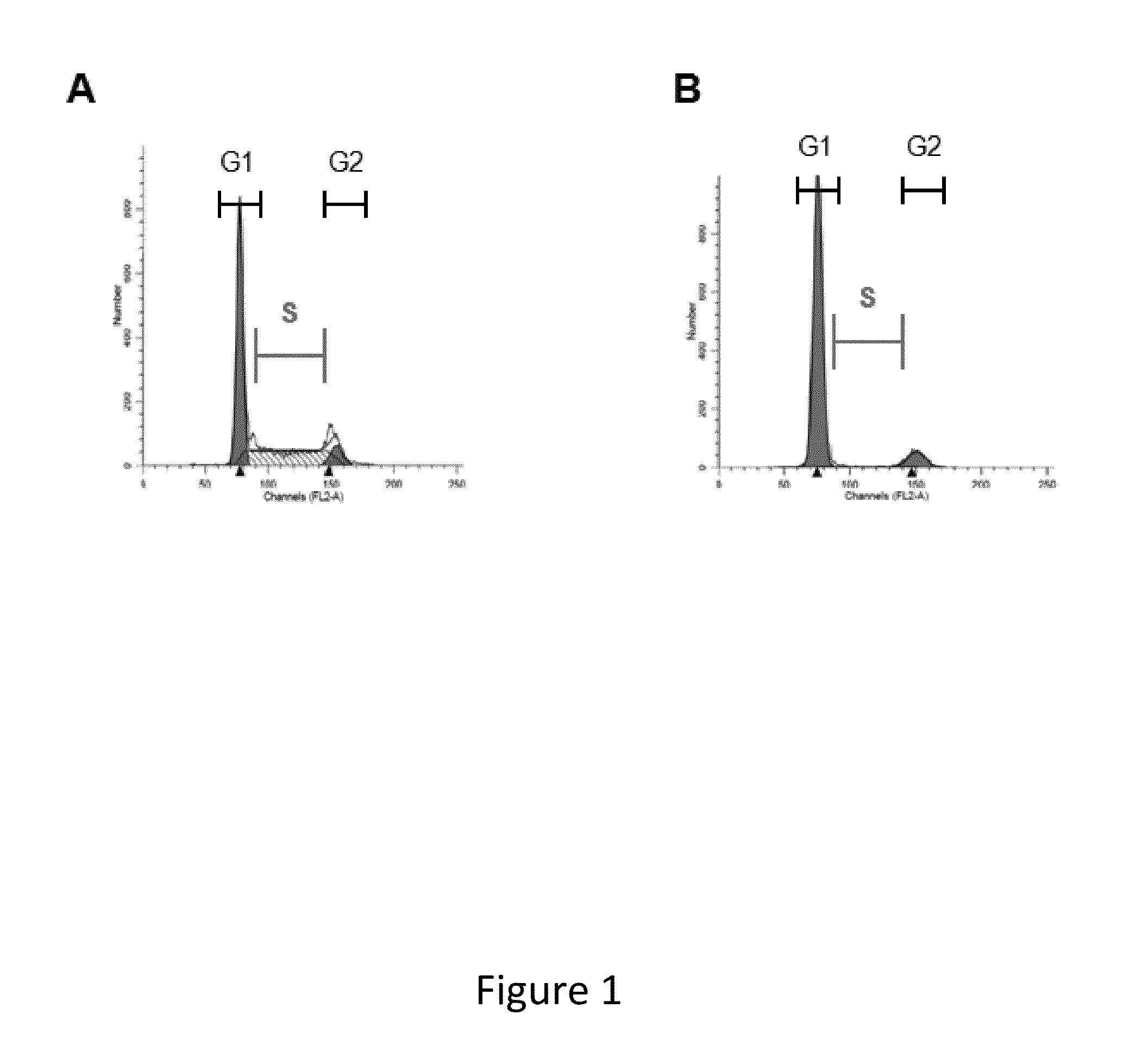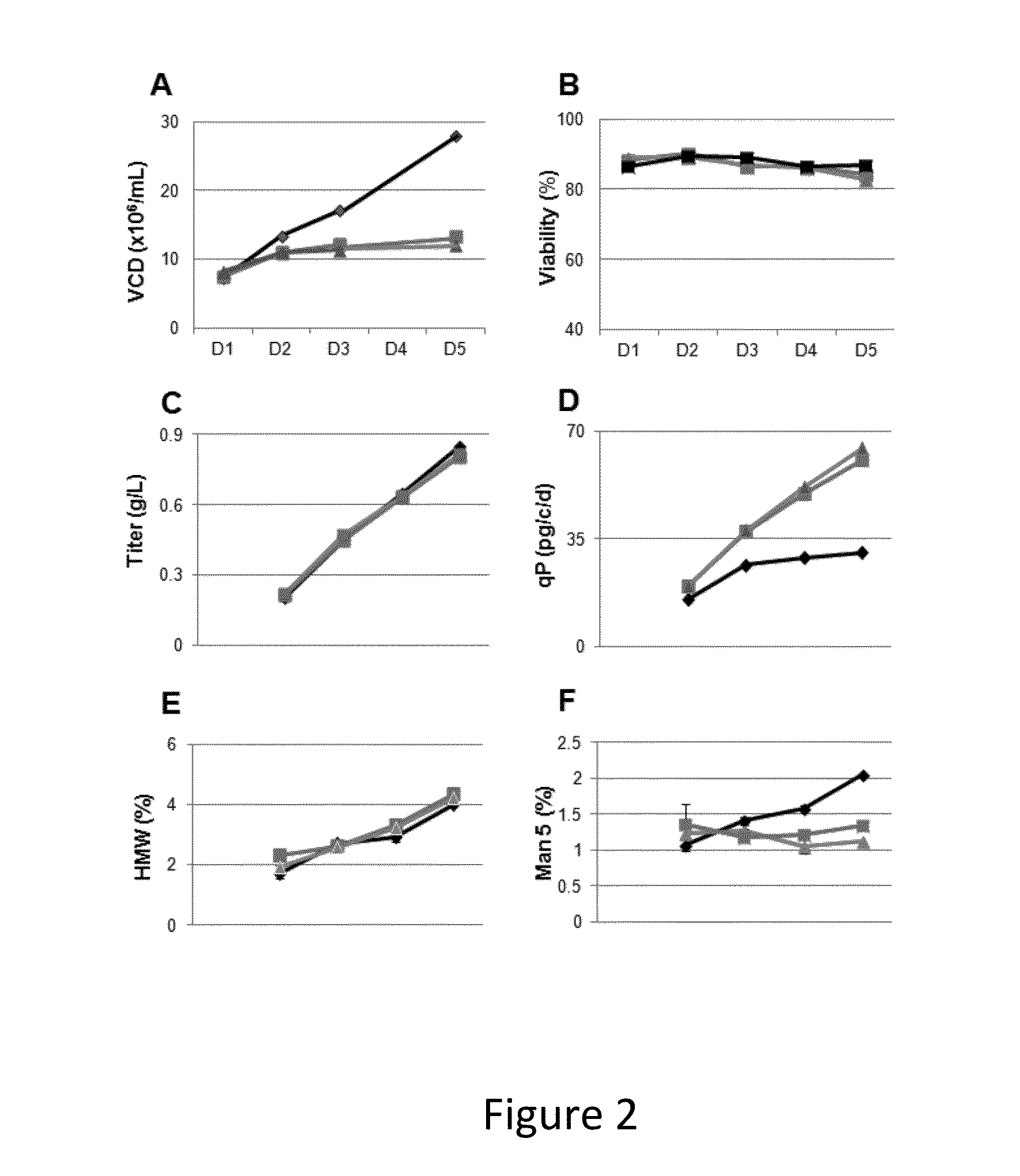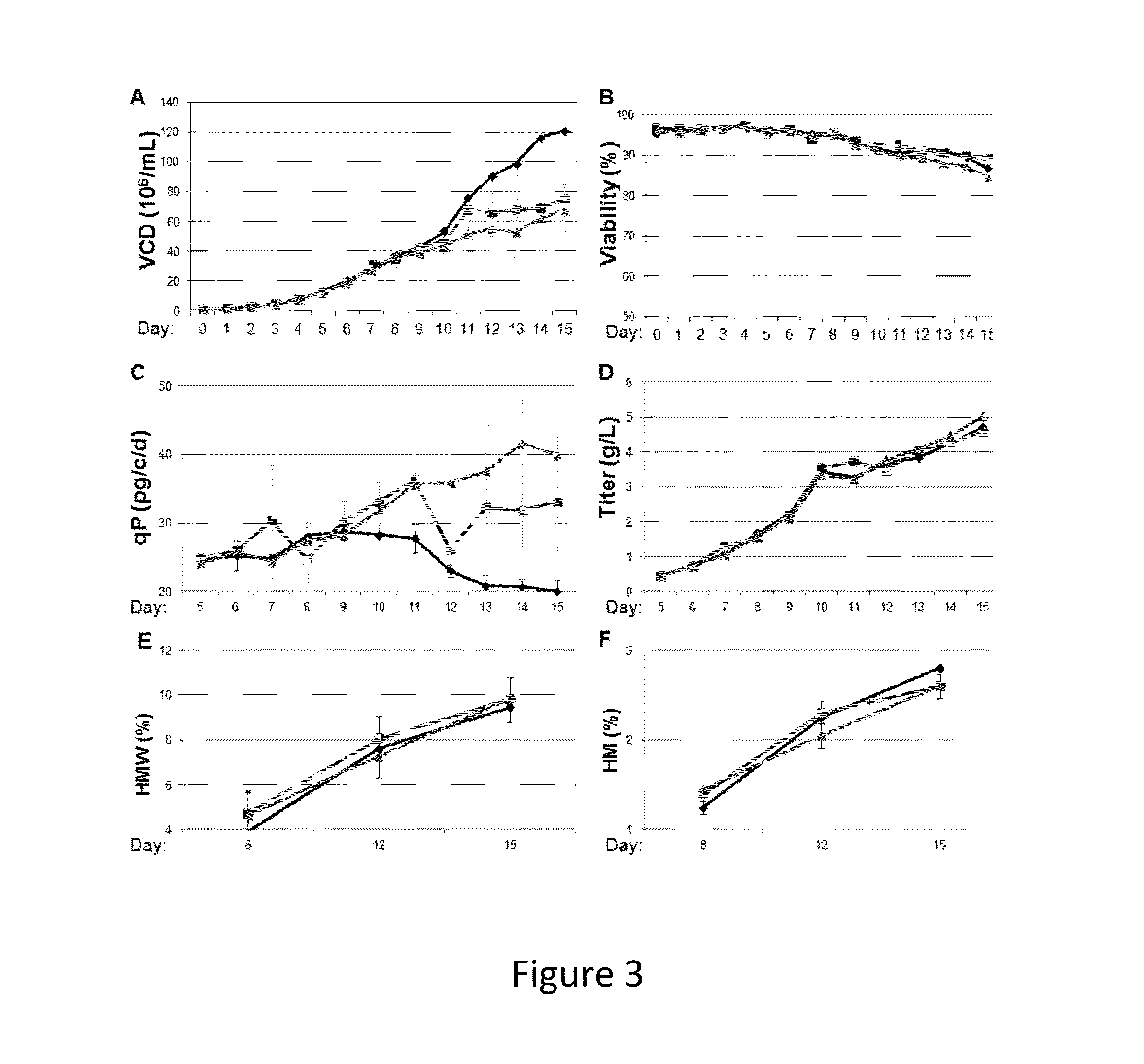Methods of using cell-cycle inhibitors to modulate one or more properties of a cell culture
a cell cycle inhibitor and cell culture technology, applied in the field of compound and process for modulating one or more properties of a cell culture, can solve the problems of both manufacturing process control and harvest, cell growth control, etc., and achieve the effect of increasing specific productivity and increasing recombinant protein production
- Summary
- Abstract
- Description
- Claims
- Application Information
AI Technical Summary
Benefits of technology
Problems solved by technology
Method used
Image
Examples
example 1
[0546]Cell cycle inhibitors are identified using the following general approach. Initially, the cell cycle in mammalian cells, notably CHO cells, was examined. This analysis provided insight into various pathways involved in cell cycle, transcription, translation, and secretion of proteins, as well as glycosylation. Representative steps identified as points at which intervention may modulate the cell cycle and induce growth arrest include modulation of CDKs and their substrates and other endogenous proteins that affect these cell cycle regulators.
[0547]A list of candidate compounds was compiled which correlated with several points of intervention as described herein. Compounds are tested for their ability to control viable cell density, maintain cell viability, maintain product quality and also increase specific productivity (product per cell). In each case a cell culture expressing a recombinant human antibody (Antibody A) is incubated with one candidate cell cycle inhibitory compo...
example 2
[0549]Transfected CHO cells expressing a recombinant human monoclonal antibody (mAb) are cultured in 24-deep well plates with seeding density at 1×107 / mL for five days. At certain time periods, samples of the cultures are taken and evaluated for viable cell density (VCD; expressed in 106 cells / mL); percent viability (as determined by trypan blue exclusion); titer of recombinant protein (expressed in grams of protein per liter of culture, or g / L, as determined by Protein A affinity HPLC); qP, or specific productivity (expressed in picograms of recombinant protein per cell per day, or pg / c / d), the presence or absence of high molecular weight substances (usually an indicator of protein aggregation; expressed as % of the total protein); and the relative percentage of Mannose 5, a major intermediate glyco-form that attaches to N297 of the mAb. N-linked glycosylation has an impact on the tertiary structure of the antibody and may affect Fc mediated antibody effector functions. The majorit...
example 3
[0551]In another set of experiments, several cell cycle inhibitors are tested as a component of a cell culture expressing Antibody A in a bioreactor production process. Production bioreactors are set up and run substantially as described in US patent application 20120214204, or by other methods or protocols known in the art. Briefly, the compounds are evaluated for their effects on cells expressing recombinant protein in 2 L bioreactors. The compound to be tested is added into the bioreactor at a predetermined concentration at day 8; samples are taken at various time points both before and after the addition of the compound, and evaluated for VCD, % viability, qP, titer of mAb produced percentage of protein that formed high molecular weight aggregates, and percentage of high mannose.
[0552]FIG. 3 shows the observed effect of cell cycle inhibition on VCD of cells expressing Antibody A with one cell cycle inhibitor compound. As shown in FIG. 3, the tested compound inhibited cell growth...
PUM
| Property | Measurement | Unit |
|---|---|---|
| Temperature | aaaaa | aaaaa |
| Temperature | aaaaa | aaaaa |
| Temperature | aaaaa | aaaaa |
Abstract
Description
Claims
Application Information
 Login to View More
Login to View More - R&D
- Intellectual Property
- Life Sciences
- Materials
- Tech Scout
- Unparalleled Data Quality
- Higher Quality Content
- 60% Fewer Hallucinations
Browse by: Latest US Patents, China's latest patents, Technical Efficacy Thesaurus, Application Domain, Technology Topic, Popular Technical Reports.
© 2025 PatSnap. All rights reserved.Legal|Privacy policy|Modern Slavery Act Transparency Statement|Sitemap|About US| Contact US: help@patsnap.com



